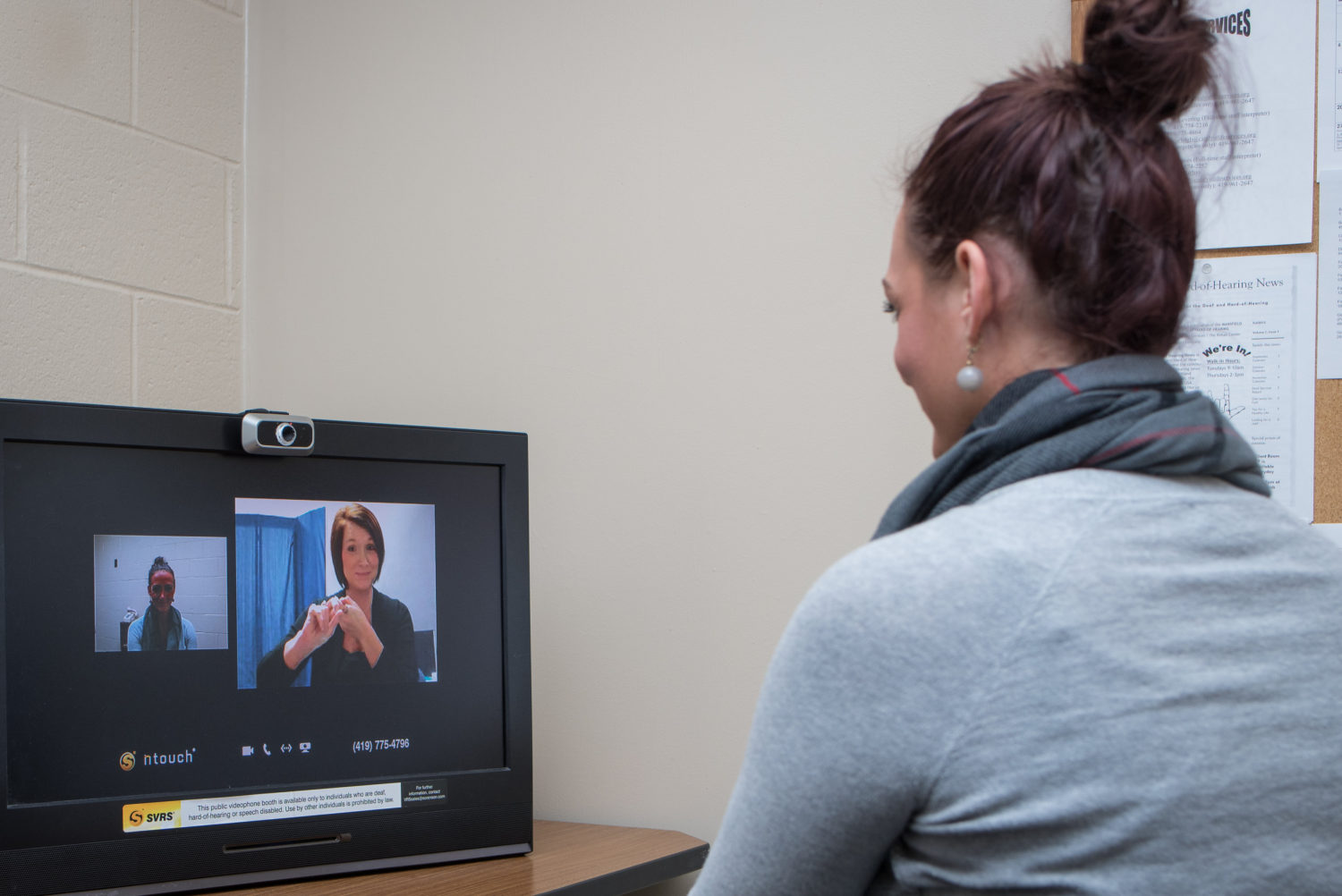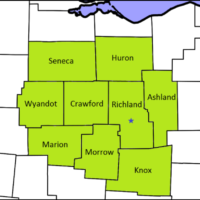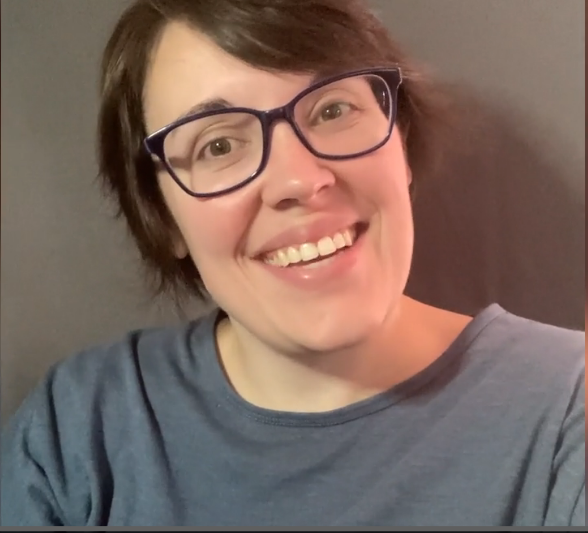In the middle of March 2020, when the COVID-19 pandemic hit Ohio, one barrier that became glaringly apparent was the lack of accessible language in many areas of society. This was shown through:
- Masks blocking people’s faces so lip reading couldn’t happen and voices were muffled
- Interpreters were limited from being brought into appointments when needed
- Remote appointments were not always accessible due to a lack of interpreter or the platform not being user friendly
Now that we are four months down the road, here are a few tips to improve language access during the COVID-19 pandemic and any other time.
1. Being able to see the entire face is necessary for the grammar of American Sign Language. This means that a Deaf or Hard-of-Hearing individual who uses American Sign Language to communicate will need to have their face seen by the interpreter and be able to see the face of the interpreter in order to have full language access. Access to and ability to use clear face masks or shields is necessary in order to make sure the language is accessible.

2. Face masks muffle the voice of the speaker. This means that the speaker may need to repeat themselves often and/or speaker louder in order to be heard by a hard-of-hearing individual who uses their residual hearing/hearing aids/cochlear implants for language access. These same individuals often read lips as well. Having access to be able to do this by having the speaker use a clear face mask or shields is necessary in order to make sure the language is accessible.
3. Families and friends are not appropriate interpreters for a Deaf or Hard-of-Hearing individual who uses American Sign Language. Interpreters are required to follow the Registry of Interpreters for the Deaf Code of Professional Conduct, receive education on American Sign Language and the interpreting process and laws, and trainings focused on interpreting. Professional American Sign Language interpreters are required to remain unbiased, interpret fully, and maintain confidentiality. Family and friends cannot fit all of these requirements, even if they can sign.
4. Video remote interpreters may not be the best choice for appointments. Deaf and hard-of-Hearing individuals who communicate using American Sign Language may not be able to see the video remote interpreter on the screen, may not understand the video remote interpreter, or may prefer a live in-person interpreter for many reasons. Another issue is that locations that choose to use video remote interpreters often don’t know how to use the equipment effectively, which can be very frustrating to the Deaf and Hard-of-Hearing individual. When determining language access, these concerns need to be taken into consideration.

Contact us!
Catalyst Life Services Community Center for the Deaf and Hard-of-Hearing provides 24/7 American Sign Language interpreting in the counties of Ashland, Crawford, Huron, Knox, Marion, Morrow, Richland, Seneca, and Wyandot. For more information, please call (419) 774-2232.


Tanya Haga is the Director of Deaf Services and has worked at Catalyst Life Services since 2014 in this role. She has a Bachelor’s of Arts in American Sign Language Interpreting, a Master’s of Education and Master’s in Business Administration. She is also nationally certified by the Registry of Interpreters for the Deaf. Tanya’s responsibilities include management and oversight of interpreting, captioning, case management for clients with a hearing loss, sign language classes, summer youth program, and contract and grant projects.